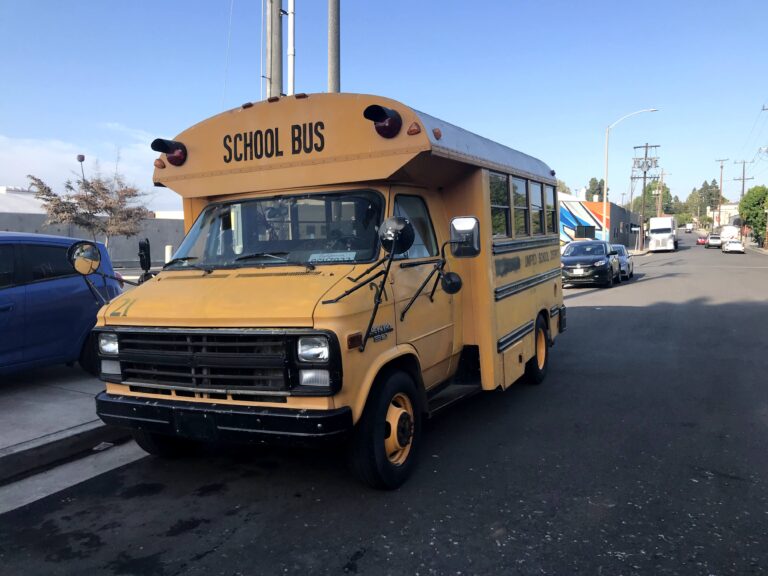Staying Steady: Mastering the Art of Preventing RV Trailer Sway While Towing
Trailer sway, also known as fishtailing, is a common problem while towing an RV that can be caused by a number of factors, including wind gusts, sudden lane changes, uneven weight distribution, or improperly inflated tires. It can lead to loss of control of the vehicle, causing accidents and endangering the lives of passengers and other drivers on the road. That’s why it’s essential to know how to prevent trailer sway and take proactive measures to ensure the safety of yourself and others on the road. In this post, we will discuss some effective ways to prevent trailer sway and ensure a smooth and safe towing experience.
Understanding RV Trailer Sway
RV trailer sway can be a terrifying and potentially deadly situation that can occur when towing an RV. It happens when the trailer starts to oscillate back and forth, creating a wobbly and unstable feeling that can make it difficult to control your RV. There are several factors that can contribute to trailer sway, including high wind gusts, improper weight distribution, inadequate tongue weight, and improper tire inflation. In some cases, inexperienced drivers or improper trailer hitch installation can also contribute to trailer sway. Understanding the causes of trailer sway is crucial for preventing it from happening. And also ensuring a safe and comfortable RV towing experience.

Different Types Of Trailer Sway
Trailer sway can be caused by several factors, including wind, passing vehicles, uneven weight distribution, and even road conditions. There are different types of trailer sway, with the two most common being fishtailing and sway caused by passing vehicles.
Fishtailing occurs when the trailer starts to move side to side in a wavelike motion, much like a fish swimming. This type of sway can be caused by sudden movements, such as quick turns or lane changes, or by improper weight distribution on the RV. If not addressed promptly, fishtailing can lead to a complete loss of control of the RV and can result in a serious accident.
Sway caused by passing vehicles is another common type of trailer sway. This occurs when a larger vehicle, such as a semi-truck or bus, passes the RV and creates a gust of wind that pushes the trailer to one side. This can be especially dangerous if the RV is not properly loaded or if the weight distribution is uneven.
Properly Load & Balance Your RV
Proper loading and balancing of an RV trailer is crucial in preventing trailer sway while towing. Uneven weight distribution can cause instability, resulting in the trailer swaying back and forth. To ensure your RV trailer is properly loaded and balanced, start by distributing weight evenly from side to side. Load heavier items low and towards the front of the trailer. Make sure the weight is evenly distributed from front to back to keep the center of gravity balanced. It’s also important not to exceed the weight capacity of the trailer or tow vehicle, as this can lead to significant sway and other handling issues. By taking the time to properly load and balance your RV trailer, you can greatly reduce the risk of trailer sway and enjoy a safer, smoother towing experience.
Hitches & Sway Control Systems
Weight distribution hitches and sway control systems are two essential tools to help prevent trailer sway when towing an RV. A weight distribution hitch works by distributing the weight of the RV more evenly across the tow vehicle and trailer axles. This can help reduce the amount of weight placed on the rear axle of the tow vehicle, which can cause trailer sway.
Sway control systems, on the other hand, are designed to reduce or eliminate the sway itself. There are a variety of sway control systems available, including friction sway control, dual cam sway control, and electronic sway control.
Friction sway control works by using friction between two surfaces to reduce trailer sway. Dual cam sway control uses a system of cams to force the trailer to stay in line with the tow vehicle. Electronic sway control systems use sensors to detect when the trailer is swaying and apply the trailer brakes to bring it back into line.
When choosing a weight distribution hitch and sway control system, it is important to ensure that they are compatible with the weight of the RV and the tow vehicle, as well as the type of towing that will be done. A professional installer can help determine the best system for your specific needs.
RV Trailer Towing Tips
When driving an RV trailer, it’s important to remember that you are towing a large, heavy object behind your vehicle. This means that you will need to adjust your driving technique accordingly. Here are a few tips:
Slow Down
Slowing down is one of the most important things to keep in mind when towing an RV trailer, especially when going downhill or around turns. When driving at high speeds, the momentum of the trailer can cause it to sway and lose control, making it difficult to steer and potentially causing a dangerous situation. By slowing down, you can better control the movements of the trailer and reduce the risk of swaying. It’s also important to brake gently and gradually rather than slamming on the brakes, as sudden braking can cause the trailer to sway and potentially jackknife. Remember, the speed limit is just a maximum, and it’s always better to arrive safely than to arrive quickly.
Avoid Sudden Movements
When towing an RV, sudden movements can create trailer sway and increase the risk of an accident. To prevent trailer sway, it’s important to avoid sudden movements while driving. This means avoiding sudden acceleration or braking, sudden lane changes, and sudden turns. When approaching a turn, it’s essential to slow down and take it slowly, making sure to use your turn signals and giving other drivers plenty of warning before you make your move. Additionally, when driving on the highway, maintain a consistent speed and avoid swerving to avoid obstacles or debris on the road. By staying calm and driving defensively, you can help prevent trailer sway and keep yourself and other drivers safe on the road.
Use Your Mirrors
When towing an RV trailer, it’s important to make sure you are aware of your surroundings and have good visibility. One way to ensure this is by using your mirrors properly. Adjust your side mirrors to provide a view of the entire length of the RV trailer, and use your rearview mirror to monitor traffic behind you. When changing lanes or turning, be sure to check your mirrors to make sure you have enough clearance. It’s also important to be aware of blind spots and adjust your mirrors accordingly. Remember, it’s better to be safe than sorry, so take your time and use your mirrors to help you safely navigate the roads while towing your RV trailer.
Use Your Brakes Properly
Using your brakes properly is crucial when towing an RV. It’s important to know that your RV trailer is significantly heavier than your vehicle, which means that your stopping distance will be longer. Therefore, you should always give yourself plenty of space to brake and slow down gradually, especially when going downhill. If your RV trailer starts to sway, avoid using the brakes aggressively, as this can make the sway worse. Instead, gently apply the trailer brakes only, using a trailer brake controller, to help stabilize the trailer. Remember to always follow the manufacturer’s instructions for your specific RV and brake system.

Stay Alert!
Staying alert when towing an RV is crucial to prevent trailer sway and avoid accidents. It’s essential to be well-rested and alert before hitting the road, and take frequent breaks to stretch your legs and avoid fatigue. It’s also important to maintain a safe distance from other vehicles and be aware of your surroundings. Watch out for potential hazards such as potholes, debris, and rough roads, and adjust your speed accordingly. Stay focused on the road and avoid distractions such as texting or making phone calls while driving. Being attentive and alert can help you anticipate potential issues and react quickly to prevent trailer sway or other safety hazards.
Driving With Different Types Of RV Trailer’s
While the general tips for preventing sway while towing an RV apply to all types of RVs, there are also some specific tips that can be useful depending on the type of RV being towed.
For travel trailers, it is important to ensure that the trailer is loaded properly and evenly distributed. This means placing heavier items low and towards the front of the trailer. Additionally, using a weight distribution hitch and sway control system can greatly reduce sway.
For fifth wheels, ensuring the weight of the trailer is properly distributed between the truck and the trailer is critical. This is where a fifth wheel hitch can come in handy, as it allows for the weight to be distributed more evenly. Additionally, driving slower and avoiding sudden movements can help prevent sway.
No matter the type of RV being towed, it is important to always be aware of the road conditions and any potential hazards. Avoiding strong crosswinds and being cautious on curvy roads can also help prevent sway.
Conclusion: RV Trailer Sway
Preventing trailer sway is crucial when towing an RV to ensure safety on the road. Understanding the causes of sway and knowing how to prevent it can help prevent accidents and damage to your RV. It is important to properly load and balance your RV trailer, use weight distribution hitches and sway control systems, drive at a safe speed, avoid sudden movements, and use your mirrors and brakes appropriately. Additionally, different types of RVs may require specific tips for preventing sway, so it is important to research and follow manufacturer guidelines. By following these techniques and staying alert while towing, you can ensure a smooth and safe journey for you and your RV.









